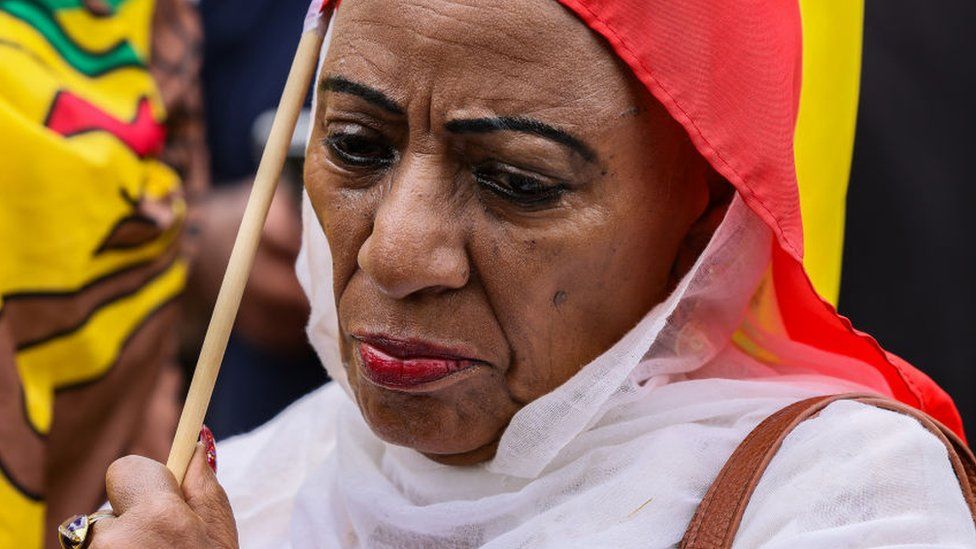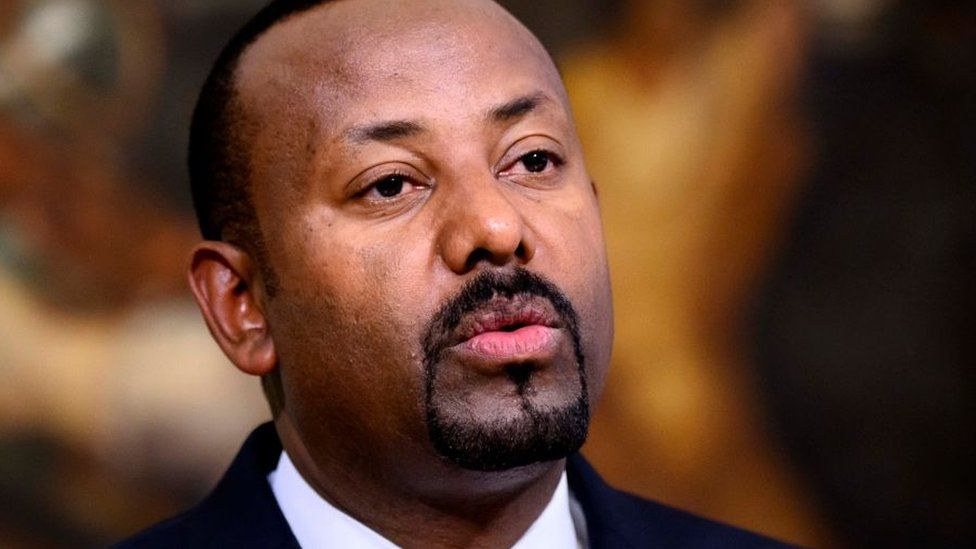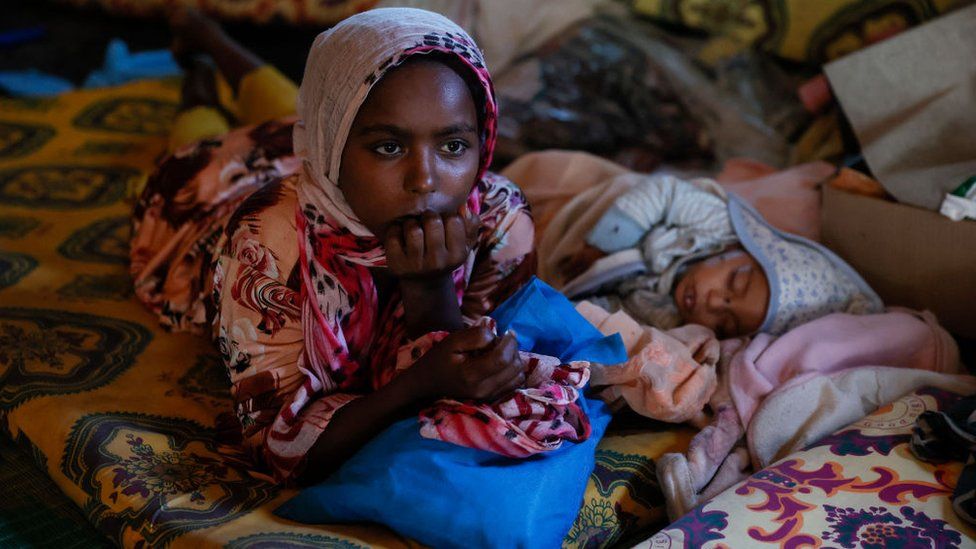Ethiopia’s Prime Minister Abiy Ahmed has found himself at the centre of a new conflict – this time in the vitally important Amhara region that marshalled its troops to help him thwart an attempt by rival Tigrayan forces to topple him.
The conflict is the latest sign that Mr Abiy is battling to live up to his Nobel laureateship – an honour bestowed on him in 2019 for ending long-running hostilities with Eritrea and setting Ethiopia on the path of democracy after almost three-decades of iron-fist rule.
But Mr Abiy’s reputation as a peacemaker and democrat has been further tarnished by the conflict in Amhara – the second-biggest region in Ethiopia.
The violence has raised alarm internationally, with Israel evacuating its citizens and Jewish people from the region last week.
So who is fighting in Amhara?
Mr Abiy is facing a formidable challenge to his power from militias known as Fano – an Amharic word loosely translated as “volunteer fighters”. The phrase was popularised in the 1930s, when “volunteer fighters” joined the army of Emperor Haile Selassie to fight Italian invaders.
It is still used today by the farmers and young men who have formed militias to defend the Amhara people whose future, they believe, is threatened by the government and other ethnic groups.
Although they have no unified command structure, these militias – or Fano – have demonstrated their strength in recent weeks by:
- carrying out what Ethiopia’s Minister of Peace Binalf Andualem called “horrific attacks” on army camps
- briefly taking control of the airport in Lalibela, a historic city famous for its rock-hewn churches
- advancing into the two biggest regional cities – Bahir Dar and Gondar – as well as the industrial city of Debrebirhan, before being beaten back by government forces
- looting of weapons and ammunition from police stations
- raiding a prison in Bahir Dar, and freeing thousands of inmates – including fellow militiamen.
The crisis is so serious that many people say the Amhara state government – controlled by Mr Abiy’s ruling Prosperity Party (PP) – is on the brink of collapse, with key officials having fled to the federal capital, Addis Ababa, for fear of being attacked.
What triggered the conflict?
The violence can be traced back to the peace deal signed by the federal government and the Tigray People’s Liberation Front (TPLF) to end the two-year civil war that saw Tigrayan forces advance towards Addis Ababa in 2021, before being forced to retreat back north.
The agreement – brokered by the African Union (AU), with the backing of the US – was widely welcomed as an attempt to restore stability in Ethiopia – a vast country that has long been regarded as a lynchpin for security in the Horn of Africa and as the birthplace of pan-African unity.

But the deal was met with deep suspicion among Amharas as they were excluded from the talks despite the fact that the Fano militias and Amhara special forces – a paramilitary group linked to the regional government – fought on the side of the federal army.
The influential US-based campaign group, the Amhara Association of America, went as far as to describe it as a “war pact” – a charge denied by Mr Abiy’s government.
Nevertheless, the perception took root in Amhara, especially after Mr Abiy then announced plans to dismantle the special forces present in each of Ethiopia’s 11 ethnically based regions.
He proposed that the special forces – which are thought to number in the tens of thousands – be integrated into the federal army and police force in order to foster ethnic unity and to prevent regional forces being drawn into conflicts – as was the case in Tigray when its special forces joined the rebellion against Mr Abiy’s government in 2020, more than two years after he assumed the premiership.
But many Amharas saw his plan as a red flag, arguing it would leave them vulnerable to attacks from neighbouring Tigray – their historic rivals for land and power in Ethiopia.
Though some of the Amhara special forces have agreed to integrate into the army and police, many others have deserted to the Fano, hiding in mountains and villages and using their weapons to carry out raids on government and military posts.
In some towns and villages, the militias have tried to establish their own administrations, in a direct threat to the power of the government.
What has been Mr Abiy’s response?
So far, the prime minister has primarily relied on military force, with the lower chamber of parliament endorsing, on Monday, his decision to declare a six-month-long state of emergency in the region.
This has placed Amhara under the de facto control of the security services. The region has been divided into four command posts, falling under the overall control of a committee chaired by intelligence chief Temesgen Tiruneh.
The heavy deployment of troops has been backed up by airpower. On Sunday, an air strike was carried out in the town of Finote Selam, reportedly killing at least 26 people at an anti-government demonstration.
This has fuelled speculation that the army will increasingly use its airpower to repel the territorial gains of the Fano, though it carries the risk of causing civilian casualties
The government has neither confirmed nor denied that an air strike took place.

Night-time curfews have been declared in six cities – including the regional capital, Bahir Dar – forcing people to stay indoors.
The security forces have also set up check-points across the region, with reports that many Amharas have in recent months been barred from travelling to Addis Ababa, raising concerns of ethnic profiling.
The authorities say they are trying to prevent potential trouble-makers from infiltrating the city. But this has fuelled the anger of Amharas, and has increased their sense of alienation from the federal government.
What’s the way out of the crisis?
During Monday’s parliamentary debate, Ethiopia’s former Foreign Minister Gedu Andargachew – who was once also the leader of the Amhara regional government – said it was clear that the ruling party had lost its support there.
He said there was a need to enter into dialogue, and to form a new interim administration in the region, but so far there is no sign of this happening.
Some analysts point out that there is also conflict in other parts of Ethiopia – including in Mr Abiy’s political heartland of Oromia, where the Oromo Liberation Army (OLA) rebel group is fighting for what it calls “self-determination”.
The federal government held peace talks with the rebels in April, but they failed to achieve a breakthrough, with the region still hit by conflict.
Oromos form the largest ethnic group in Ethiopia, followed by Amharas.
The OLA has been accused of widespread atrocities against Amharas in Oromia, raising fears that it wants to drive them out of the region. The OLA denies targeting Amharas.

When he took office, Mr Abiy championed his vision of Mademer, or “coming together”, and ended state repression by unbanning opposition groups, freeing political prisoners and allowing exiles to return.
He also launched the PP, a merger of different ethically based parties, believing that it would promote nationhood in a country where ethic loyalties are strong.
But critics say that Ethiopia has returned to repressive rule, with Mr Abiy battling to gain popular support for his vision – the latest sign of this being the conflict in Amhara.
It is unclear what the prime minister plans to do next but some analysts say he needs to convene a national forum where political and ethnic groups can discuss how best to resolve their differences so that peace returns to a nation torn apart by conflict.

